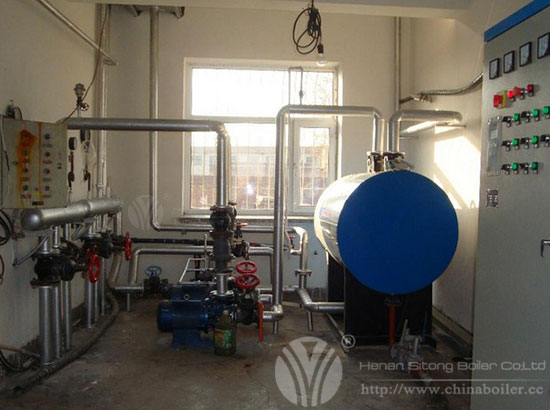Date:2016-04-26
Why worry about it?
Improper storage of yourboilercan lead to a series of problems from general tube thinning due to oxygen attack to complete tube failure, including burner controls and valves. According to the statistics, burner failures is responsible for 85% fatal power boiler incidents. If your steam boiler operates at over 15psig it is a power boiler.
Never store a dirtyboiler
Soot in moisture circumstance will become acidic slurry that corrodes iron of Boilers.Get rid of the soot by soot blowers. Follow the instructions and complete your soot blowing before you shut the boiler down. Most people clean tubes the old fashioned way, with a wire brush and a vacuum. It's messy work, but commercial services are available at reasonable costs, and they deal with all the hazardous disposal issues that could arise.

Be safe!
If you have to crawl through a hole to get inside your boiler, you have a confined space. The confined space must be checked before you enter for there are pockets of toxic gasses or low oxygen. If you can swing open a door to access all of your tubes without climbing through a hole, you're safe. Wear a fitted respirator when cleaning your boilers.Because the soot is harmful. Follow your confined space procedures.
Boiler
You should plan on having your chemical treatment representative inspect the boiler when you open it. To open the boiler, you need to allow the boiler water to open the boiler, you need to allow the boiler water to cool to 120°F or so and then drain the boiler. As soon as the boiler is drained, open the boiler. Any loose debris or sludge can then be washed out with fresh water; pressure washing isn't recommended. If you have any visible scale, the water treatment rep can adjust your treatment program to take care of this.
Everything else.
Completely dry out the boiler watersides after cleaning. Usually we blowing dry air through it with a heater or a fan. Inspect the burner while the boiler is open. All moving parts should move freely. The air damper, oil nozzle, and/or diffuser should be maintained in like-new condition. Use a light penetrating lubricant to coat all of the unprotected exposed metal parts. Inspect the controls. Any controls used to monitor the water level of the boiler should be opened and inspected for mechanical operation before reinstalling them. Use new gaskets on the low water controls. Try applying a little lead plate to the gaskets to help them release next year.
Puttingthe boiler to bed.
The boiler is dry and ready for storage. Block off all possible entry points for moisture. After you have this accomplished, place some moisture absorbing material (desiccant, like silica gel or quicklime) in trays in the firesides and watersides. Follow the instructions provided with the desiccant or this rule of thumb: two (2) lbs of quicklime or five (5) lbs of silica gel per 30 cubic feet of flooded boiler volume.
Affix large signs on the outside of the boiler detailing the location of the desiccant. Check the material periodically and freshen as needed. If the boiler is left outside, remove the electronics (for storage in a warm dry atmosphere) and cover the boiler completely.
A little care goes a long way
It is worth to take the time to store your boiler properly. Check with your manufacturer for detailed instructions is better.
Pre: How to Avoid Thermal Shock-Hot Water Boilers
Next: Boiler ignition steps recommanded by Sitong's engineer
Contact us now if you have any question about our company and products [email protected]. Any of your inquiry and suggestion will be highly appreciated. We will keep your information completely private.
WANT TO FIND A BOILER FOR YOUR COMPANY ?CONTACT US